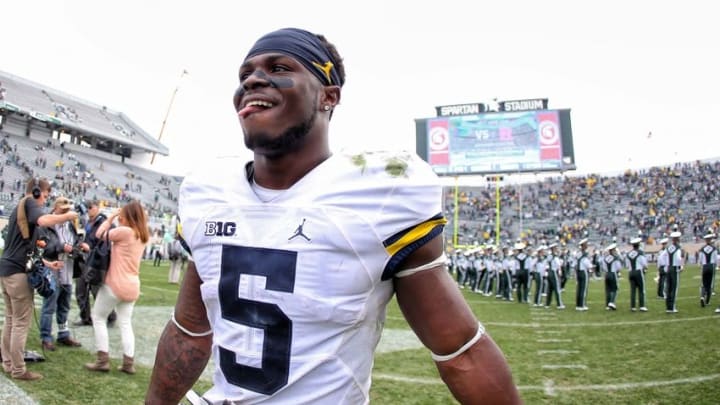
Along with Michigan’s Peppers, Clemson’s Watson is the other can’t-miss NFL Draft prospect attending the 2016 Heisman Trophy ceremony. Watson has made it clear that he will enter the 2017 NFL Draft after his junior season at Clemson University.
Given that he plays quarterback at a very high level, Watson is one of potentially three franchise quarterback talents that could enter the 2017 NFL Draft a year early from school. The two others are Notre Dame’s DeShone Kizer and North Carolina’s Mitch Trubisky.
People have their opinions on the pro ceilings for both Kizer and Trubisky, but Watson seems to be the closest to a sure-thing of the three. He is mobile, but Watson doesn’t let it define him like Jackson. He is insanely accurate as a passer. Watson’s career completion percentage is 67.7. Overall, his quarterback skill set perfectly translates to an NFL pro-style offense.
It’s hard to label the NFL prototype for Watson, as it’s not terribly obvious. He’s way more accurate of a passer than Cam Newton, has a bigger body than Russell Wilson and is a bit more mobile than an Andrew Luck or Blake Bortles. Maybe we’re looking at a Tony Romo or a better version of Ryan Tannehill, in all honesty?
Watson made a commitment to be more of a passer than a runner in 2016. While it hurt him a bit in October and November, Watson has shown that he can make the appropriate adjustments to be a franchise quarterback in the NFL. He’s not going to lean on his legs and projects as a more conservative version of Jameis Winston.
Watson feels like the type of quarterback where the loathsome burden of a perpetually dysfunctional organization is not going to soul-crush him. In short, he can succeed as the next franchise quarterback for the Chicago Bears, the San Francisco 49ers and maybe even the Cleveland Browns.
The only two things that could derail him as an NFL quarterback are that he doesn’t throw the ball down the field –8.5 yards per attempt in his career– and that he will throw poorly-timed interceptions. Watson’s greatness seems to be what ails players like Matt Ryan or Kirk Cousins. They all throw very catchable footballs, but will get picked off at times on middle-of-the-field crossing patterns with just average arm strength.
Again, that’s not a terrible Achilles’ heel as an NFL passer. Ryan has had a great career and Cousins is about to make a ton of cash. It’s really hard to see Watson busting as an NFL quarterback. Look for him to pop in year two in the NFL like Winston and Marcus Mariota did this season.
Ceiling: Tony Romo
Median: Derek Carr
Floor: Ryan Tannehill
2017 NFL Draft prospects: First-round, almost a lock to be top-five. Could be No. 1 overall pick.
